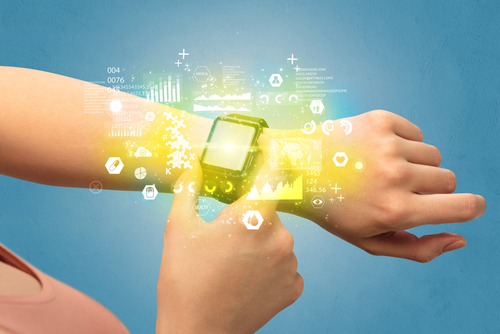Today health wearable technologies are commonly available as fitness trackers, insulin pumps, and vital signs monitors. By using accelerometers and micro-electro-mechanical systems (MEMS), these tools are able to track and monitor physical activities and vital signs. Wearables are designed to collect data automatically. But what is the point? You can check your health app and, aside from learning how many steps you’ve walked so far today, you don’t really understand what any of it means. In order for this data to matter, medically, the health app has to communicate with the clinician’s EHR system. With incoming information from your wearable device, the physician can effectively incorporate the data and monitor your health status. Moreover, data mined from wearable devices is more systematic and accurate in timing. Wearables record all the details and analyze them directly, unlike manual reporting that is prone to mistakes and can be biased by clinical staff. So what are the benefits of having fitness and health data transferred from a wearable device directly to the EHR software? Our friends from Belitsoft (a company focusing on medical software development) have the answers below. Patient vitals tracking As the most popular type of wearables, activity trackers offer apparent opportunities for wearable technology in EHR. Thus, for example, an average fitness band monitors activity data including the number of steps taken, floors climbed, calories burnt, heart rate, and sleeping patterns. Some of the measurable parameters also include blood pressure, pulse rate, muscle activity, perspiration level, glucose level, ECG, core temperature, oxygen saturation, stress levels, and eating habits. According to the HIMSS report, “When patients believe their doctor or their nurse is looking at their data, they don’t eat the cake, they take a walk rather than sit in front of the TV – they change their behaviors because they think someone is watching.” Summing up, patients report data via their wearable devices integrated with EHR avoiding regular appointments. This PGHD (patient-generated health data) can serve to supplement clinical records to develop a longitudinal profile of patient health, as well as promote care coordination. Chronic disease management When it comes to chronic diseases like type II diabetes, obesity, and hypertension, clinicians often require significant behavior and lifestyle changes from their patients. These “healing” habits, such as diet, physical activity, and medication adherence, are at the lowest rate of clinical control. “Think about patients with chronic conditions,” Kathy Downing, director of Practice Excellence at the American Health Information Management Association, said. “For example, it might be helpful to analyze data from an activity tracker for a patient with diabetes to determine whether he or she is adhering to exercise regimens. Having access to this data electronically makes it easier to correlate activity with positive outcomes such as lower blood sugar levels or weight loss.” Indeed, 90 percent of those incorporating wearable devices into the clinical workflow found the technology can positively impact chronic care, according to the 2018 HIMSS Media report. John Moore, medical director at Fitbit, is sure patients need more constant guidance and self-reflection to succeed that can be provided with occasional office visits. “If feedback only comes every few months during office visits, the possibility of reaching goals dramatically diminishes,” Moore said. “Only about 30 percent of individuals diagnosed with hypertension reach goal blood pressure by the end of a year under the care of a provider, for example.” Thus, the use of wearable technology in EHRs for remote monitoring of chronically ill patients offers an extra layer of data for professionals to manage their health and keep them motivated. Post-operative care Health professionals at Cedars-Sinai Hospital are using wearable technologies to track and improve recovery times for post-operative patients. “Patients need to walk after they’ve had a surgery,” Brennan Spiegel, MD, Cedars-Sinai’s director of health services research, said. “There’s decades of research, so we know that.” The program includes patients who received a fitness tracker after undergoing major surgery to track their physical activity. The device not only helps physicians measure patient’s steps, but also motivate users while improving the recovery process. Clinical outcomes also include reduction in treatment time and fewer health impairments, such as re-hospitalizations. Even though step-tracking isn’t exact and the information collected isn’t medical grade, healthcare professionals may use the data to create better means to measure activity and foster engagement. Conclusion From patients homes to hospital beds, there are many options for using wearables. The ability to collect, analyze, and integrate this data into EHRs may facilitate clinical care by providing a more detailed and accurate assessment of health status outside of the ordinary clinical visit. Wearables assist in remote patient monitoring and timely interventions to prevent acute exacerbations of chronic illness. As for patients, data collected by wearables allows for adopting better health habits as well as monitoring conditions or drug adherence more effectively. This modern technology enables clinicians to have greater insight into patients health beyond the examining room.

